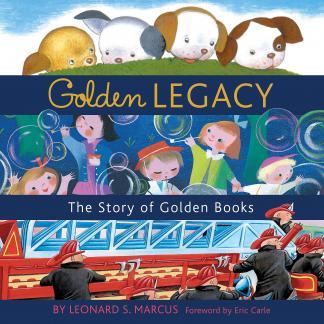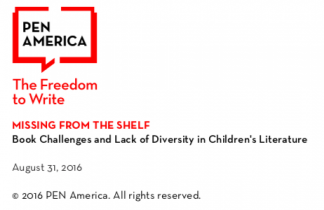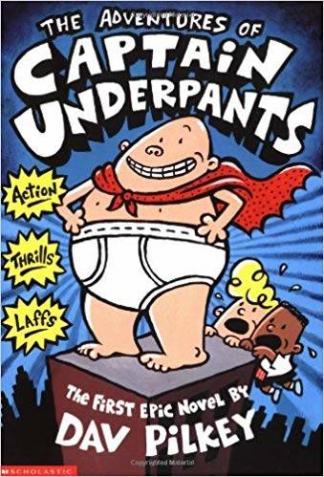The following titles are just a small selection of the reference materials that inform the
work of the Children’s Literature Research Collections. To read these or any of the rare
books, manuscripts, or process materials of the Archives and Special Collections, look at
our on-line catalog and finding aids on the University of Minnesota Libraries’ site, then
email or call to make an appointment. We will have what you are interested in available
in our reading room.
Arbuthnot, May Hill. Children and Books. Scott,
Foresman, 1947.
Bader, Barbara. American Picturebooks from Noah’s
Ark to the Beast Within, New York: Macmillan, 1976.
Baker, Augusta. Stories: a list of stories to tell and to
read aloud. 5th ed. rev. New York: New York Public
Library, 1960.
Baker, Augusta, and Ellin Greene. Storytelling: Art
and Technique. 2nd ed., Bowker, 1987.
Bauer, Caroline Feller. Caroline Feller Bauer’s New
Handbook for Storytellers. Illustrations by Lynn
Gates. American Library Association Editions, 1993.
Bishop, Rudine Sims. Free within Ourselves: The
Development of African American Children’s
Literature. Westport: Greenwood Press, 2007.
Huck, Charlotte S. and Barbara Kiefer. Children’s
Literature in the Elementary School. Boston:
McGraw Hill, 2004.
Marcus, Leonard S. Author Talk. New York: Simon
and Schuster Books for Young Readers, 2000.
Golden Legacy. New York:
Random House Children’s Books, 2007.
Margaret Wise Brown:
Awakened by the Moon, Boston: Beacon, 1992.
… Minders of Make-Believe:
Idealists, Entrepreneurs, and the Shaping of
American Children’s Literature. Houghton Mifflin
Co., 2008.
… Randolph Caldecott The Man
Who Could Not Stop Drawing. New York: Frances
Foster Books, Farrar Straus Giroux, 2013.
… Show Me A Story. Somerville:
Candlewick Press, 2012.
… Sponsored by The Children’s
Book Council. 100 Years of Children’s Book Week
Posters. New York: Alfred A. Knopf, 2019.
Pellowski, Anne, and Lynn Sweat. The Story
Vine: A Source Book of Unusual and Easy-to-Tell
Stories from around the World. Macmillan; Collier
Macmillan, 1984.
Seale, Doris, and Beverly Slapin. A Broken Flute: The
Native Experience in Books for Children. AltaMira
Press; Oyate, 2005.
Sutherland, Zena, et al. Children and Books. 6th ed.,
Scott, Foresman, 1981.
Digital Resources from The Kerlan Collection.
https://www.lib.umn.edu/clrc/digital-resources
Further Reading in Topics in Children’s Literature: A Selected Bibliography
These materials were chosen to from peer-review journals to explicate current topics in children’s literature. It is by no means a comprehensive list. Please add more suggested readings in the comments section. Although not everyone has access to academic databases, these are on display at the exhibit The ABC of It: Why Children’s Books Matter at the second floor discussion area. Due to copyright limitations we cannot disseminate copies. All of these materials are available through public libraries interlibrary loan. Please talk to your librarians.
Engaging Children in Conversations about Oppression Using Children’s Literature
Boutte, Gloria and Muller, Meir, Talking Points,Volume 30, Number 1, NCTE 2018.
Missing From the Shelf: Book Challenges and Lack of Diversity in Children’s Literature By Pen America
https://pen.org/sites/default/files/PEN_childrens_lit_report_FINAL_online.pdf
Storytelling
Iarusso, Marilyn Berg: “Stories: A List of Stories to Tell and to Read Aloud”: The History of the New York Public Library’s Storytelling List
Storytelling, Self, Society (12:1) Spring 2016, 24-38.
Dr. Suess/Theodore Geisel.
Nel, P. (2001). “Said a bird in the midst of a blitz…”: How world war II created dr. seuss. Mosaic : A Journal for the Interdisciplinary Study of Literature, 34(2), 65-85. Retrieved from http://login.ezproxy.lib.umn.edu/login?url=https://search-proquest-com.ezp2.lib.umn.edu/docview/205341785?accountid=14586
Ishizuka, Katie and Stephens*, Ramón (2019) “The Cat is Out of the Bag: Orientalism, Anti-Blackness, and White Supremacy in Dr. Seuss’s Children’s Books,” Research on Diversity in Youth Literature: Vol. 1 : Iss. 2 , Article 4.
Available at: https://sophia.stkate.edu/rdyl/vol1/iss2/4
Caddy Woodlawn
Quigley, Dawn, Silenced. Voices Taken from American Indian Characters in Children’s Literature.” American Indian Quarterly 40.4 (2016): 364-78. Web.
LGBTQ
Laura M. Jiménez (2015) Representations in Award-Winning LGBTQ Young Adult Literature from 2000–2013, Journal of Lesbian Studies, 19:4, 406-422, DOI: 10.1080/10894160.2015.1057795
Horning, K. T. (2014). Spying on Louise Fitzhugh. Horn Book Magazine, 90(3), 13–17. Retrieved from http://login.ezproxy.lib.umn.edu/login?url=http://search.ebscohost.com/login.aspx?direct=true&AuthType=ip,uid&db=a2h&AN=95651368&site=ehost-live
Curious George
Rae Lynn Schwartz-DuPre & Helen Morgan Parmett (2018) Curious about George: Postcolonial Science and Technology Studies, STEM education policy, and colonial iconicity, Textual Practice, 32:4, 707-725, DOI: 10.1080/0950236X.2016.1267038
Cummins, June. “The Resisting Monkey: ‘Curious George,’ Slave Captivity Narratives, and the Postcolonial Condition.” A Review of International English Literature 28.1 (1997): 69–83. ARIEL. Web. 12 April 2015. https://journalhosting.ucalgary.ca/index.php/ariel/article/view/33868
Captain Underpants/ Freedom to Read
Von Drasek L. It Begins with a Question. Knowledge Quest. 2007;36(2):66-68. http://login.ezproxy.lib.umn.edu/login?url=http://search.ebscohost.com/login.aspx?direct=true&AuthType=ip,uid&db=eue&AN=502927987&site=ehost-live. Accessed February 25, 2019.
Schliesman, M. (2008). Intellectual freedom. Language Arts, 85(3), 221-226. Retrieved from http://login.ezproxy.lib.umn.edu/login?url=https://search-proquest-com.ezp1.lib.umn.edu/docview/196910945?accountid=14586
Secret Garden/ Evaluation checklist
Valint, A. (2016). “Wheel Me Over There!”: Disability and Colin’s Wheelchair in The Secret Garden. Children’s Literature Association Quarterly 41(3), 263-280. Johns Hopkins University Press. Retrieved March 1, 2019, from Project MUSE database.
Couzelis, M. J. (2013). “Who We Was”: Creating Witnesses in Joseph Bruchac’s Hidden Roots. Journal of Literary & Cultural Disability Studies 7(2), 159-174. Liverpool University Press. Retrieved March 1, 2019, from Project MUSE database.
Recommended Resources for Collection Development
The best selection of multicultural and social justice books for children, YA, and educators.
Guide for Selecting Anti-Bias Children’s Books
The Cooperative Children’s Book Center (CCBC)
Bank Street College of Education Children’s Book Committee
Teaching for Change
Guide for Selecting Anti-Bias Children’s Books
Building Social Justice Starting in the Classroom
Link here

























https://www.tolerance.org/magazine/its-time-to-talk-about-dr-seuss?utm_source=Teaching+Tolerance&utm_campaign=0092e3458c-Newsletter+3-5-2019&utm_medium=email&utm_term=0_a8cea027c3-0092e3458c-100849933&fbclid=IwAR2KNKQJGQV95lpigMQkVgNumaNrmDj9OVIJdTDBYIPUVMWMAWc9d-5xsdE
If you are looking for a simplified explanation of , “What’s with Dr. Seuss?” Teaching Tolerance does a good job